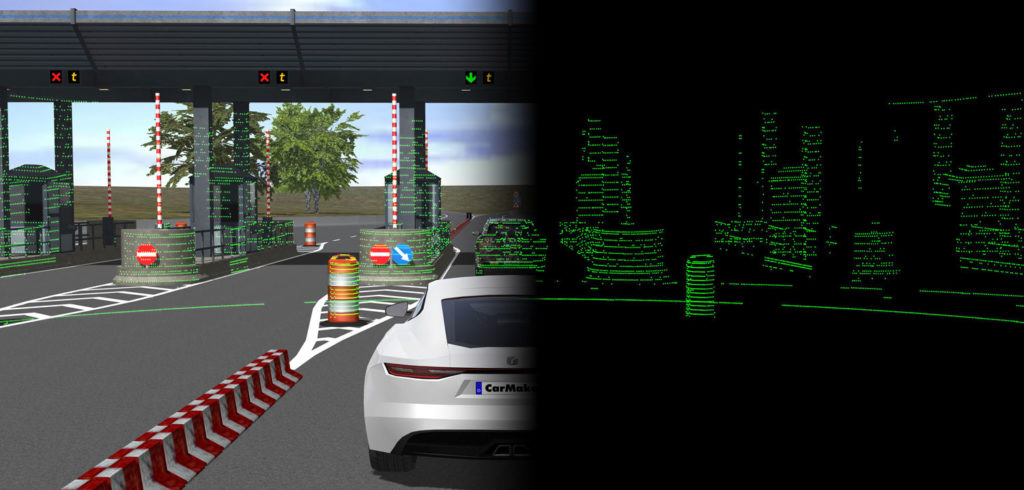IPG Automotive has launched version 8.0 of its CarMaker suite with newly integrated Lidar raw signal interface (RSI). The lidar RSI is a physical sensor model based on ray tracing that enables detailed modeling of lidar sensors. With this latest addition, users now have access to virtual models of all physical sensor technologies in the simulation solution.
A lidar determines the distance to its surrounding objects by measuring the time of flight. CarMaker version 8.0 enables virtual modeling and individual definition of specific lidar properties using a variety of parameters. This allows users to define the mounting position and orientation, cycle time or transmission power, for instance, and even the beam pattern. In addition, it is possible to model rotating lidar systems for 360° surround view.
To test the algorithms or assistance systems downstream, properties of the objects to be detected can be modeled, such as transmissive, retroreflective, diffuse or specular reflection types, as well as reflectance dependent on the objects’ colors. The intensity of the reflected beam is compared using a threshold-based method for which the threshold itself can be parameterized as well in order to adjust the sensitivity of the receiver unit.
“With the option of real-time capable modeling and generation of raw signals from radar, lidar, camera and ultrasonic sensors, our software solutions offer all that is needed for the virtual development of raw data-based fusion and detection algorithms or driving functions based on these,” explained Dr Andreas Höfer, product manager for simulation software at IPG Automotive.
Whether the tests are focused on detecting objects or on the resulting decisions, the sources of errors can be identified and eliminated at an early stage of development.
In order to accelerate testing with the new Lidar RSI and established sensor models, CarMaker 8.0 enables parallel use of multiple GPUs. This enables real-time tests of complex sensor configurations such as those needed for (semi) autonomous driving. For dealing with large test catalogs, parallel testing is possible on an HPC system or in the cloud with multiple GPUs.


